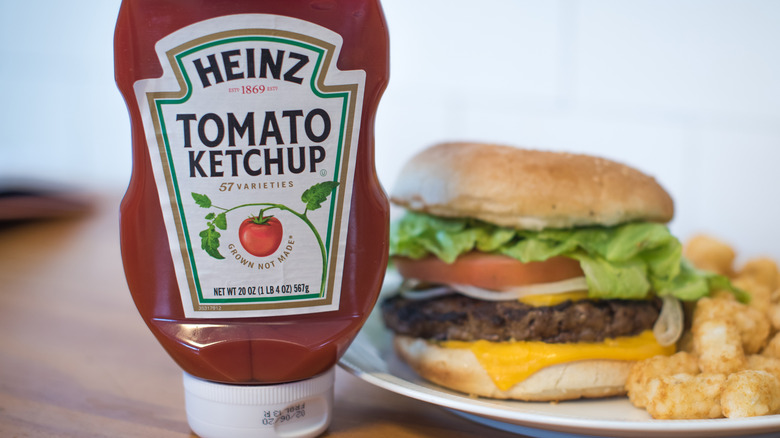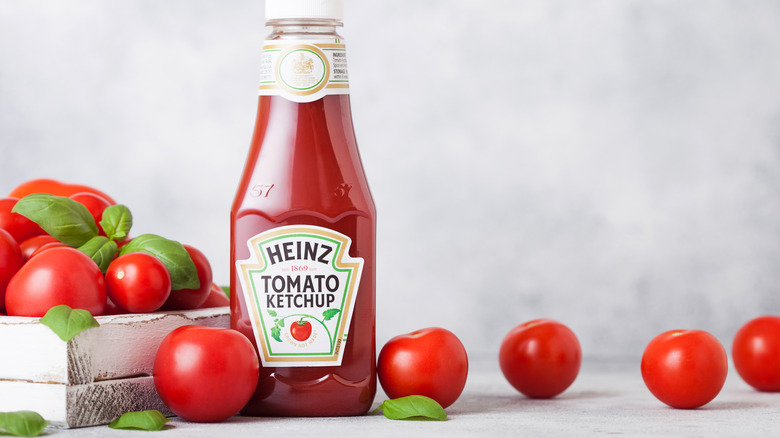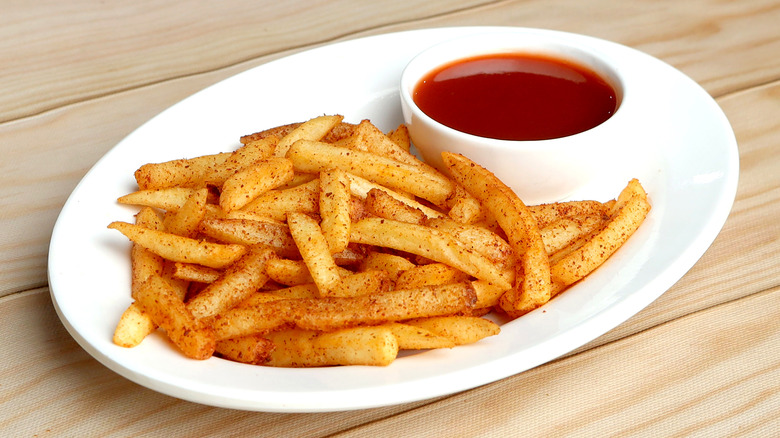How Ketchup Changed American Food Forever
When you think of condiments, ketchup most likely comes to mind. The ubiquitous tomato-based sauce has played a major role in American fare for as long as anyone can remember. Bottles of vivid red ketchup can be found at pretty much every restaurant table or diner counter in the country, conveniently placed so hungry customers can serve themselves and add a savory kick to their salty fries, juicy burgers, hearty scrambled eggs, and melty grilled cheese sandwiches. But ketchup is so much more than a trusty sidekick. It truly is, in every sense of the word, an icon.
Just how well-loved is ketchup? According to Smithsonian, 97% of Americans currently have a ketchup bottle in their fridge at home, and somewhere around 10 billion ounces of ketchup is purchased by consumers annually — roughly three bottles per person per year. That's a lot of tomatoes and vinegar, though it hasn't always been so.
What is ketchup's impact on American food culture?
Ketchup has made quite a journey over the past several hundred years. For one, ketchup's recipe has evolved immensely, starting as a fermented fish sauce, without tomatoes, in 17th-century China. The umami sauce became all the rage among British sailors who used it to amp up their dry, bland ship provisions. The product eventually made its way back to the mainland, where the recipe was altered in various ways to complement different staple dishes. In the 19th century, Americans began using tomatoes as a main ingredient in the recipe, mainly because tomatoes were a pervasive crop in the U.S. To prolong shelf life, they bottled and preserved the sauces with vinegar and spices, inventing ketchup as we know it.
More importantly, ketchup's production has set a standard for many foods we know and love. Due to its overnight fame and increasing popularity, ketchup was mass-produced starting in the late 19th century. However, the recipe had to be changed ever-so-slightly to retain freshness in glass bottles. For example, more vinegar as well as sugar were added, providing a tangy, salty, and sweet palate and a thicker, more viscous texture, reports Smithsonian. The ketchup craze even began shaping the American restaurant business, as more diners opened their doors with the confidence that their menu items paired well with the red stuff.
How else did ketchup make a splash?
Ever since Heinz Ketchup entered the market in 1876, it has been the best-selling ketchup product in the world, climbing up to legendary status over the years. But Heinz has provided the world with way more than a tasty product. The company was also a major player in developing sanitary production methods in factories, standardizing the bottle and can sterilization processes and mandating workers to follow strict rules of hygiene on the job (per Smithsonian).
Ketchup's soaring popularity also helped to establish modern agriculture, which ultimately resulted in American tomato growers harvesting more of the beloved fruit. In the early '60s, plant breeder Jack Hanna and engineer Coby Lorenzen, scientists at University of California-Davis, invented a mechanical tomato harvester, allowing thousands of tomatoes to be gathered simultaneously and for farmers to become more profitable. Their main vendors? Ketchup companies.
Ketchup is eaten by people of every socioeconomic class. While its recipe, production, and uses have been modified since its inception, the sassy red sauce has surely withstood the test of time. Next time you dunk a crispy French fry in a dollop of ketchup, remember that you're partaking in a truly all-American condiment.


